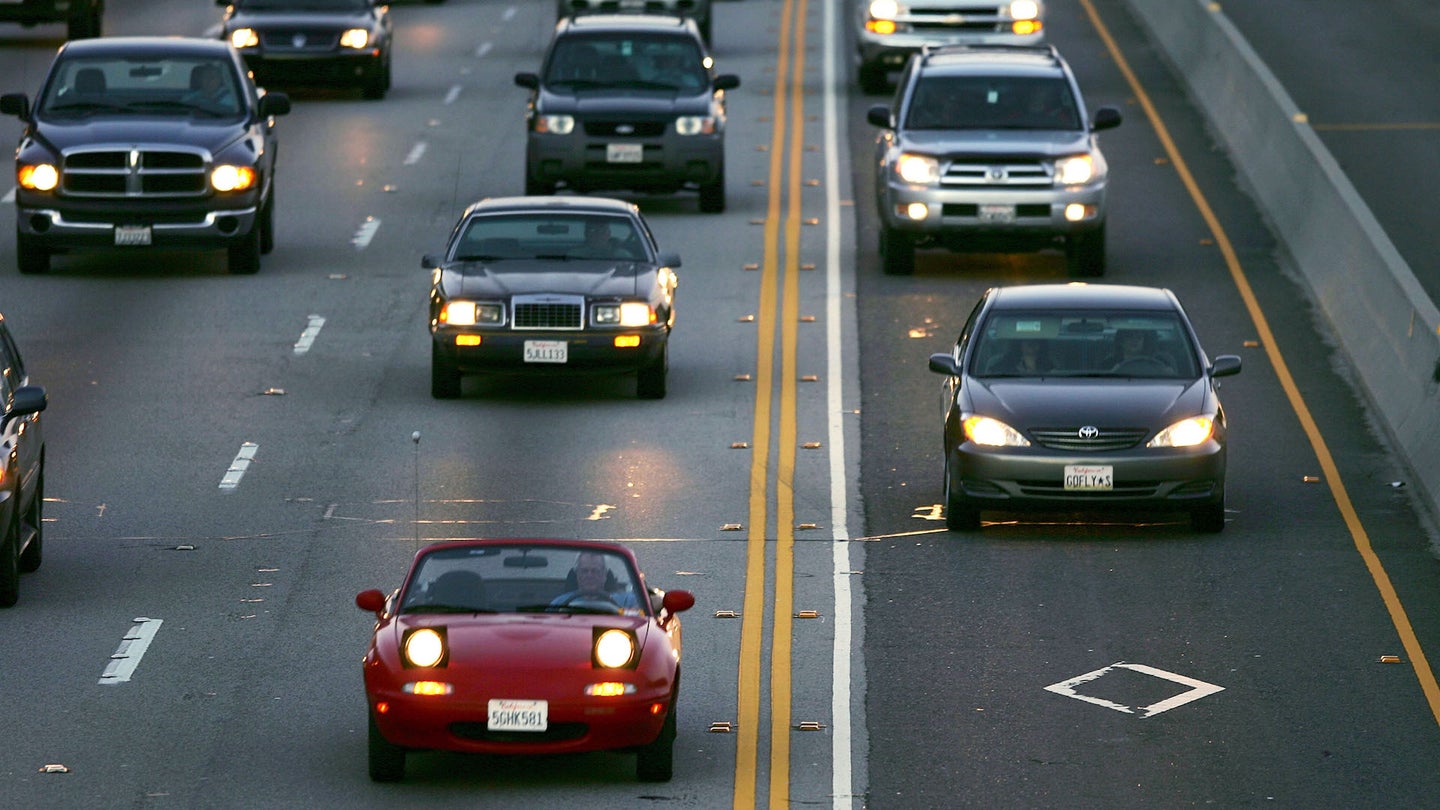More New Vehicles Equipped with Crash-Avoidance Technology
Four of 20 automakers say automatic emergency braking is standard on more than half of their 2017 model-year vehicles, with Toyota the front-runner.

Automakers are taking steps—some more so than others—in equipping new U.S. vehicles with crash avoidance technology that experts say could halve rear-end crashes and will prevent tens of thousands of crashes and injuries in coming years.
Four of 20 automakers report that automatic emergency braking, or AEB, is standard on more than half of their 2017 model year vehicles, safety officials said Thursday. Another five report more than 30 percent of vehicles they produced came with the technology.
The progress report from the National Highway Safety Administration and the Insurance Institute for Highway Safety comes two years after they brokered voluntarily commitments from 10 automakers, followed by 10 more six months later, to make new vehicles with crash avoidance technology.
AEB systems come into play when drivers don't hit the brakes or don't do so hard enough to avoid or lessen the impact of crashes. On-vehicle sensors like radar warn when a crash is imminent, and apply the brakes if the driver doesn't. AEB systems halve rear-end crashes, research has found. Separately, forward collision warnings that simply alert drivers to what's ahead reduce the crashes by a third, research indicates.
The pact with automakers calls for AEB, also known as autobrake, and forward collision warning, or FCW, standard in nearly all light-duty cars and trucks by September 2022. The deadline for making the technology standard in most trucks follows three years later, in 2025.
By 2025, the commitment will prevent 28,000 crashes and 12,000 injuries, IIHS estimates. Consumer Reports supported the commitment and agreed to assist in monitoring automaker progress.
Automakers involved make up more than 99 percent of the U.S. market. They include: Audi, BMW, Fiat Chrysler, Ford, General Motors, Honda, Hyundai, Jaguar Land Rover, Kia, Maserati, Mazda, Mercedes-Benz, Mitsubishi Motors, Nissan, Porsche, Subaru, Tesla Motors, Toyota, Volkswagen, and Volvo.
Toyota is the frontrunner, equipping 56 percent of its 2017 fleet, or 1.4 of 2.5 million vehicles, with AEB. GM is next, with AEB in 551,777 of 2.8 million vehicles, or 20 percent of its 2017 fleet. Honda is third, with 492,330 of 1.6 million vehicles with AEB, or 30 percent.
The technology is used in nearly all of Tesla's 2017 Model S cars and Model X SUVs. Mercedes-Benz equipped 96 percent of its 2017 vehicles with standard AEB. Seventy-three percent of 2017 Audi vehicles have AEB, followed by 68 percent of Volvos and 58 percent of BMWs. Just under half of Subaru's 2017 vehicles have AEB.
Other manufacturers have yet to make significant progress. Fewer than 10 percent of 2017 vehicles sold by Fiat Chrysler, Ford, Hyundai, Kia, and Mitsubishi have AEB, according to the news release. Jaguar Land Rover and Porsche didn't offer the feature at all on 2017 vehicles.
The steps made are great for luxury car buyers and more, but many automakers need to do more, with just 19 percent of 2017 models including the lifesaving technologies as standard features, said David Friedman, directors, cars and product policy and analysis at Consumers Union.
"Automakers, safety groups and the government should also work together to make highway operation and pedestrian detection standard features on all AEB systems," said Friedman.
